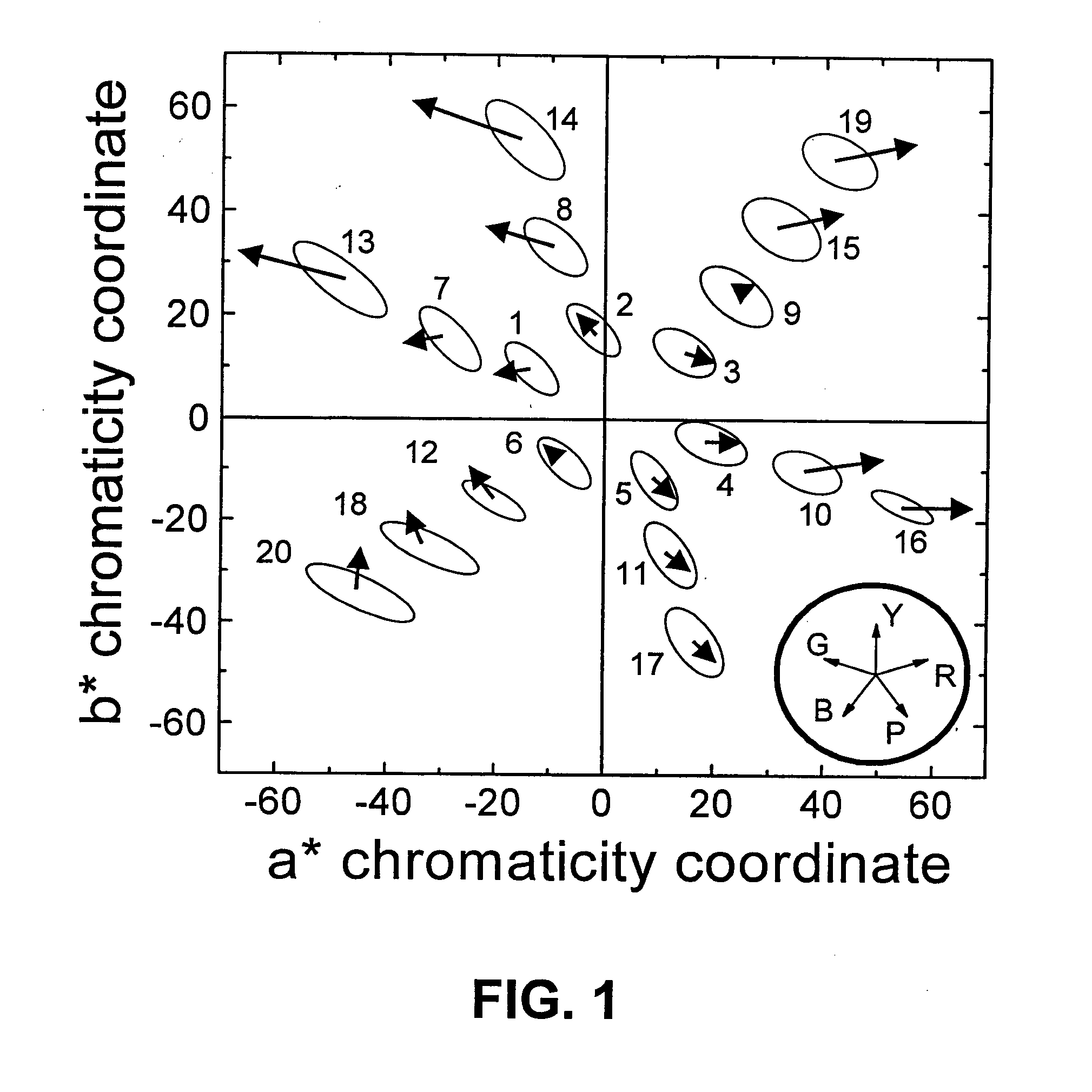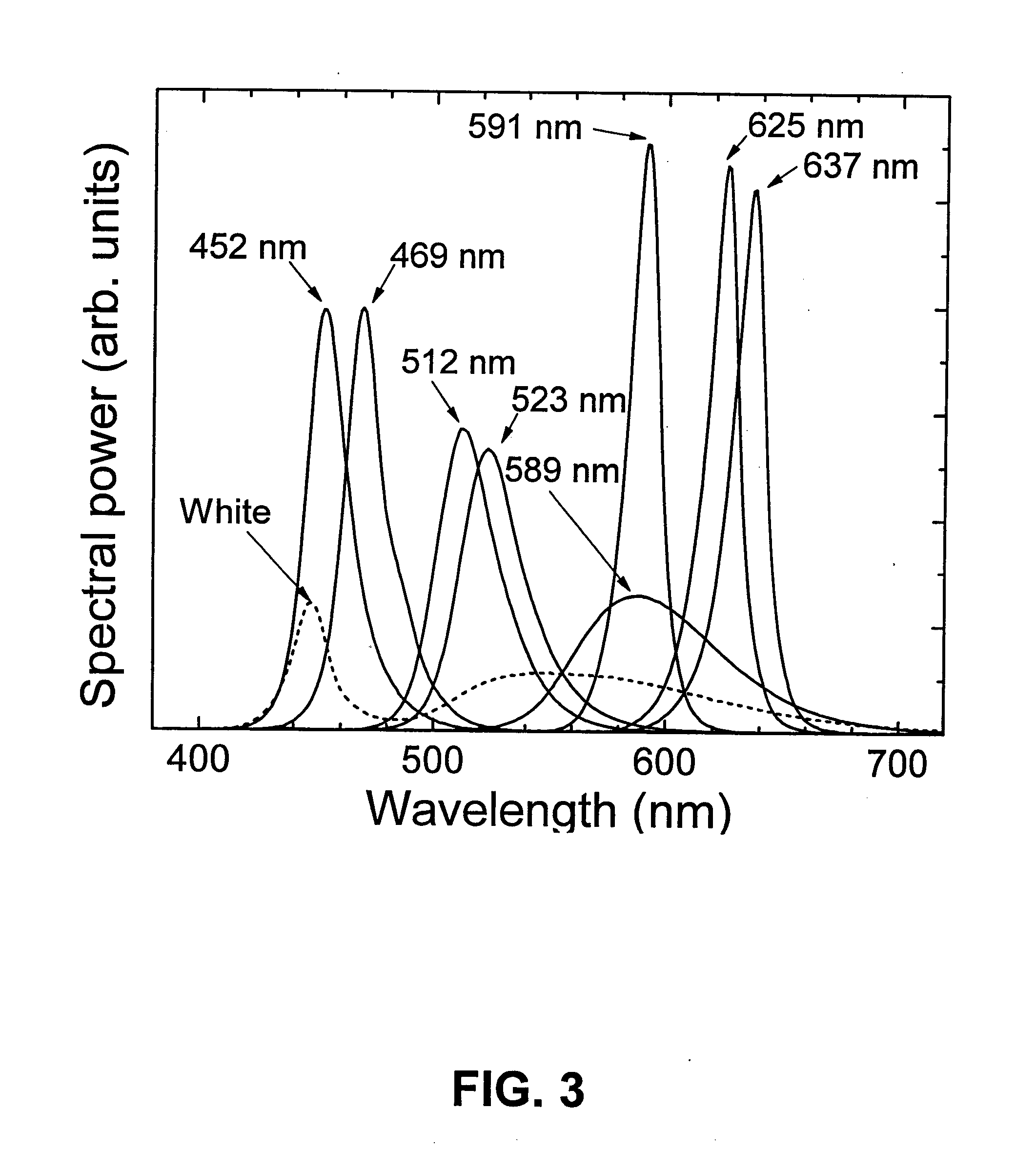Polychromatic solid-state light sources for the control of colour saturation of illuminated surfaces
a solid-state light source and illuminated surface technology, applied in the direction of electric variable regulation, process and machine control, instruments, etc., can solve the problems of inability to fully describe the colour quality of illumination, the inability to use a large number of test colour samples in the rsub>a /sub>assessment procedure, and the inability to fully exploit the versatility of solid-state lighting in colour quality. , to achieve the effect of increasing or decreasing the saturation, increasing or decreasing
- Summary
- Abstract
- Description
- Claims
- Application Information
AI Technical Summary
Benefits of technology
Problems solved by technology
Method used
Image
Examples
Embodiment Construction
[0055]In accordance with embodiments of the present invention, a white light source having a predetermined CCT is provided. The light source comprises at least two groups of coloured visible-light emitters, each group having emitters with almost identical SPDs, an electronic circuit for the control of the average driving current of each group of emitters and / or the number of the emitters lighted on within a group, and a component for uniformly distributing radiation from the different groups of emitters over an illuminated object. One embodiment of the present invention describes new combinations of the emitter groups with SPDs and RPRFs established such that in comparison with a reference blackbody radiator or daylight-phase illuminant, colours of at least a predetermined fraction of a large set of test colour samples are rendered with increased (decreased) chromatic saturation and colours of at most another predetermined fraction of a large set of test colour samples are rendered ...
PUM
 Login to View More
Login to View More Abstract
Description
Claims
Application Information
 Login to View More
Login to View More - R&D
- Intellectual Property
- Life Sciences
- Materials
- Tech Scout
- Unparalleled Data Quality
- Higher Quality Content
- 60% Fewer Hallucinations
Browse by: Latest US Patents, China's latest patents, Technical Efficacy Thesaurus, Application Domain, Technology Topic, Popular Technical Reports.
© 2025 PatSnap. All rights reserved.Legal|Privacy policy|Modern Slavery Act Transparency Statement|Sitemap|About US| Contact US: help@patsnap.com



